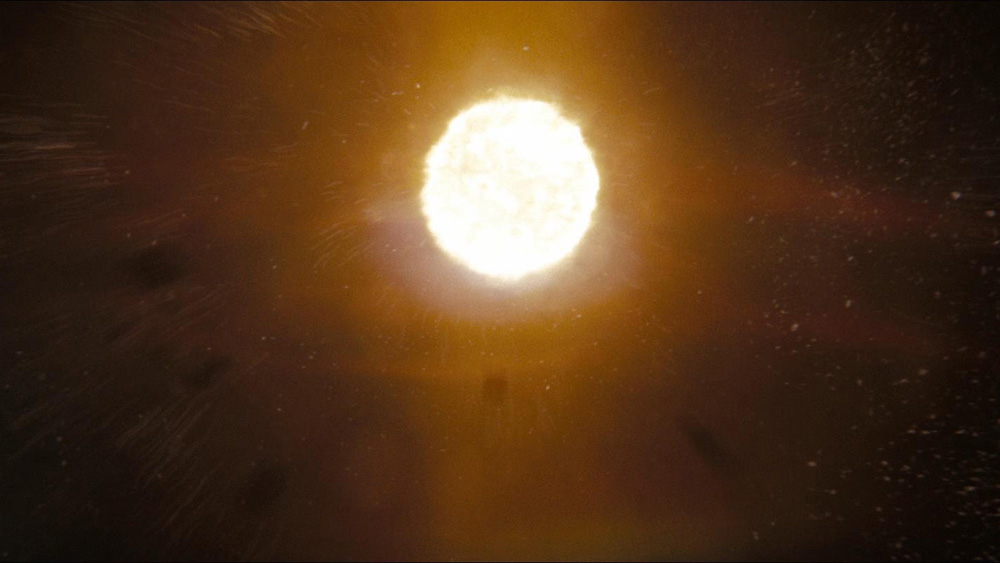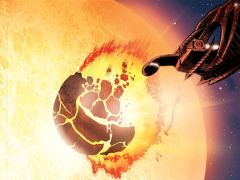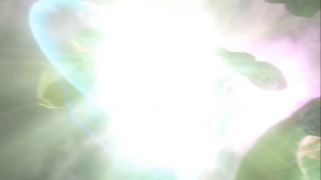Difference between revisions of "Hobus system (STO)"
m |
m |
||
| Line 1: | Line 1: | ||
{{ImageInfoBox2|name=Hobus system|file=supernova-st11.jpg|caption=Supernova ([[Star Trek (Film)|ST11]])}} | {{ImageInfoBox2|name=Hobus system|file=supernova-st11.jpg|caption=Supernova ([[Star Trek (Film)|ST11]])}} | ||
{{TableRow|title=Astrometrics|data=[[Beta Quadrant]], [[Hobus Sector (STO)|Hobus Sector]]}} | {{TableRow|title=Astrometrics|data=[[Beta Quadrant]], [[Hobus Sector (STO)|Hobus Sector]]}} | ||
| − | {{ | + | {{Ad|AmazonSTIDWCD}} |
|}</div> | |}</div> | ||
| + | {{BannerSTO}} | ||
One of the oldest stars in the [[Milky Way galaxy|galaxy]], the star in the Hobus system<ref name="STIDWCD1"/> went [[supernova]] in [[2387 (STO)|2387]].<ref name="ST11"/> The first people to sound the alarm about the impending disaster were [[Nero (STO)|Nero]], [[commanding officer|captain]] of the ''[[Narada (STO)|Narada]],'' a [[mining]] vessel in the [[Romulan Mining Guild (STO)|Romulan Mining Guild]] who was present in the system when the star began to show signs of instability, and [[Ambassador]] [[Spock (STO)|Spock]], who had been observing the phenomenon from [[Romulus (STO)|Romulus]]. While surveying the innermost planet in the system, the ''Narada'' detected trace amounts of [[iridium (STO)|iridium]] and [[deuterium (STO)|deuterium]], as well as large deposits of [[decalithium (STO)|decalithium]].<ref name="STIDWCD1"/> | One of the oldest stars in the [[Milky Way galaxy|galaxy]], the star in the Hobus system<ref name="STIDWCD1"/> went [[supernova]] in [[2387 (STO)|2387]].<ref name="ST11"/> The first people to sound the alarm about the impending disaster were [[Nero (STO)|Nero]], [[commanding officer|captain]] of the ''[[Narada (STO)|Narada]],'' a [[mining]] vessel in the [[Romulan Mining Guild (STO)|Romulan Mining Guild]] who was present in the system when the star began to show signs of instability, and [[Ambassador]] [[Spock (STO)|Spock]], who had been observing the phenomenon from [[Romulus (STO)|Romulus]]. While surveying the innermost planet in the system, the ''Narada'' detected trace amounts of [[iridium (STO)|iridium]] and [[deuterium (STO)|deuterium]], as well as large deposits of [[decalithium (STO)|decalithium]].<ref name="STIDWCD1"/> | ||
The star went supernova on [[Stardate]] [[2387 (STO)#SD64390|64390.1]],<ref name="STIDWCD2"/> and the shockwave propagated through [[subspace]],<ref name="STOHeadingOut"/> destroying [[Romulus (STO)|Romulus]] and [[Remus (STO)|Remus]], killing billions.<ref name="ST11"/> The remaining core of the star, now a [[neutron star]],<ref name="STSL"/> became known as the Hobus Cinder, while the expanding cloud of gas generated by the star's detonation became known as the Hobus Nebula.<ref name="STONeeds"/> | The star went supernova on [[Stardate]] [[2387 (STO)#SD64390|64390.1]],<ref name="STIDWCD2"/> and the shockwave propagated through [[subspace]],<ref name="STOHeadingOut"/> destroying [[Romulus (STO)|Romulus]] and [[Remus (STO)|Remus]], killing billions.<ref name="ST11"/> The remaining core of the star, now a [[neutron star]],<ref name="STSL"/> became known as the Hobus Cinder, while the expanding cloud of gas generated by the star's detonation became known as the Hobus Nebula.<ref name="STONeeds"/> | ||
Latest revision as of 18:57, 24 February 2023
One of the oldest stars in the galaxy, the star in the Hobus system[1] went supernova in 2387.[2] The first people to sound the alarm about the impending disaster were Nero, captain of the Narada, a mining vessel in the Romulan Mining Guild who was present in the system when the star began to show signs of instability, and Ambassador Spock, who had been observing the phenomenon from Romulus. While surveying the innermost planet in the system, the Narada detected trace amounts of iridium and deuterium, as well as large deposits of decalithium.[1]
The star went supernova on Stardate 64390.1,[3] and the shockwave propagated through subspace,[4] destroying Romulus and Remus, killing billions.[2] The remaining core of the star, now a neutron star,[5] became known as the Hobus Cinder, while the expanding cloud of gas generated by the star's detonation became known as the Hobus Nebula.[6]
Image Gallery
A planet in the Hobus system destroyed prior to the star going supernova (ST IDW CD 1)
The Hobus star goes supernova (STO: "Graduation Day")
Notes and References
- ↑ 1.0 1.1 Johnson, Mike Tim Jones (Writers). "Number One". Star Trek: Countdown (Comic), issue 1. Story by Roberto Orci & Alex Kurtzman. Edited by Andy Schmidt. Art by David Messina. Colors by David Messina with Giovana Niro & Paolo Maddaleni. Lettering by Chris Mowry. Creative consulting by David Baronoff. IDW Publishing. January 2009.
- ↑ 2.0 2.1 Abrams, J.J. & Damon Lindelof (Producers). Star Trek. Directed by J.J. Abrams. Written by Roberto Orci & Alex Kurtzman. Paramount Pictures. 8 May 2009.
- ↑ Johnson, Mike Tim Jones (Writers). "Number One". Star Trek: Countdown (Comic), issue 2. Story by Roberto Orci & Alex Kurtzman. Edited by Andy Schmidt. Art by David Messina. Colors by Giovana Niro. Color consulting by Ilaria Traversi. Lettering by Neil Uyetake. Creative consulting by David Baronoff. IDW Publishing. February 2009.
- ↑ "Heading Out": Stinnett, Daron & Zinkievich, Craig (Executive Producers). Star Trek Online. Associate Production by Kiera Castner. Produced by Daniel Stahl. Directed by Joe Lyford. Casting Direction by Lani Minella. Lead Writing by Christine Thompson. Cryptic Studios, 2 February 2010.
- ↑ Bormanis, Andre. Star Trek: Science Logs. Pocket Books, March 1998.
- ↑ Martin, Michael A. "The Needs of the Many." Star Trek Online. Novel. Pocket Books. April 2010.



